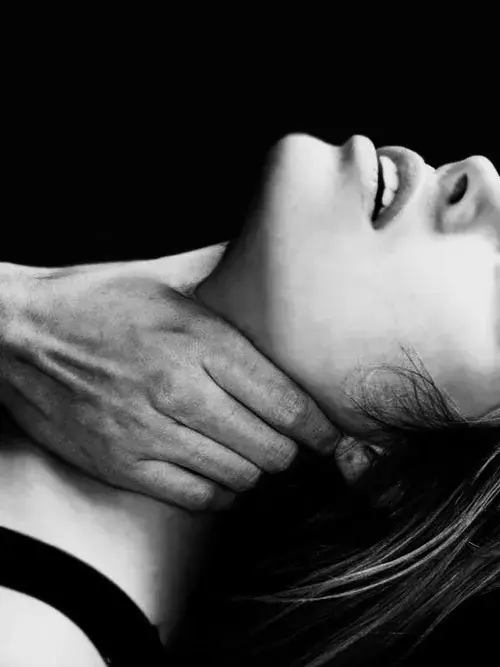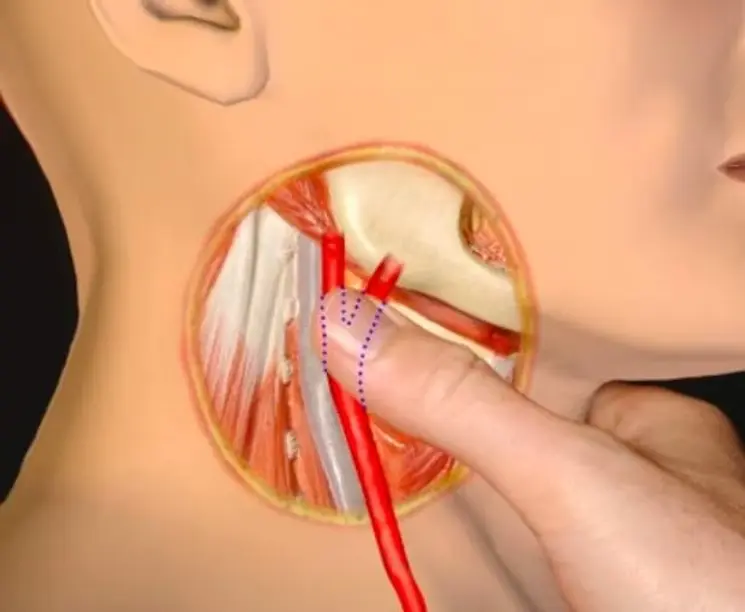Breath play – also known as breath control play – is one of the most controversial forms of BDSM practice. The most common method involves choking, causing the partner to temporarily struggle for breath, restricting blood flow to create an extremely intense and unusual orgasm. It can provide powerful pleasure, a deep sense of power, and intense spiritual connection, but it also carries the highest risks of all techniques.
With many years of research and practice, I always emphasize: Breath play is not for the inexperienced, and it is only safe when you have a deep understanding of the body – psychology – technique.

1. Why is breath play so appealing?
Psychological impact: Controlling the breath touches the deepest survival instinct of humans. The feeling of "not being able to breathe" causes the body to release adrenaline, endorphins, and sometimes even dopamine, creating a mix of pleasure and fear – a very unique state.
Physiology: During the process of restricting oxygen to the brain, when oxygen levels are low, you may feel dizzy or lightheaded. But when the pressure is released, oxygen and blood begin to flow back, and you may feel a different kind of rush. This is due to the release of dopamine, serotonin, and endorphins, which can cause a dizzying sense of euphoria. In fact, those hormones are triggered by your body's protective response.
Absolute power: For the Dominant, controlling breath is the ultimate symbol of power. For the Submissive, it is the complete relinquishment of control, placing one's life in the hands of another.
Emotional connection: Breath play requires absolute trust. Safe practices often create a deep bond between two people.
2. Các dạng breath play phổ biến
- Hand choking: Use your hands to gently squeeze the neck (front or back).
- Arm choking: Using the arm (like a rear naked choke in grappling) to apply pressure on the carotid artery.
- Smothering: Covering the nose and mouth with hands, a pillow, or the body.
- Breath control with props: Using a towel, rope, mask, plastic wrap (extremely high danger).
- Submersion: Drowning (absolutely not recommended outside of a professional environment).
6. Water boarding: Using a cloth or towel placed over the face, then water is slowly poured over the cloth (an extreme form of breath play, but essentially, it is not only BDSM; it has also been used as a form of torture)
Each form has a different mechanism of action:
- Cản trở đường thở (airway restriction) → thiếu oxy
- Obstruction of blood flow to the brain (vascular restriction) → drop in blood pressure, rapid loss of consciousness

3. Risks and Hazard Mechanisms
Breath play does not have an "absolute safety level." A single mistake can result in permanent brain damage or death in just a few seconds.
- Tổn thương não do thiếu oxy – chỉ cần 3–4 phút.
- Ngất do thiếu máu não – có thể dẫn đến chấn thương do ngã hoặc co giật.
- Chấn thương khí quản, dây thanh âm nếu siết quá mạnh.
- Tổn thương động mạch cảnh → nguy cơ đột quỵ.
- Psychological risk – trigger for PTSD or panic.
4. What side effects may occur?
Even if you take all appropriate precautions, you may still experience some side effects such as:
- Ho
- Lost direction
- Muscle weakness
- Paralyzed
- Sleepy
- Loss of coordination
Just one isolated side effect is not particularly dangerous. But if you are practicing Breath Play alone, experiencing multiple side effects at the same time could make it difficult for you to escape a dangerous situation.

5. Mandatory safety principles
- Chỉ thực hành khi có kinh nghiệm và kiến thức: Nếu chưa từng được hướng dẫn trực tiếp, hãy học từ chuyên gia.
- Trao đổi kỹ trước buổi chơi: Mục đích, rủi ro, giới hạn, safe word, dấu hiệu dừng ngay lập tức.
- Luôn quan sát phản ứng cơ thể: Mắt, màu da, sự tỉnh táo, khả năng phản hồi.
- Thời gian siết cực ngắn: Làm quen với việc choking chỉ 5-10 giây rồi thả ra ngay. Bắt đầu từ từ và có thể tăng dần cường độ sau các buổi luyện tập.
- Không thực hành khi say rượu, dùng thuốc, hoặc có bệnh tim – huyết áp.
- Luôn sẵn sàng sơ cứu: Biết CPR, hồi sức tim phổi, gọi cấp cứu nếu cần.
- Có người quan sát (spotter) trong các session nặng.
- Tuyệt đối KHÔNG thực hành khi chưa có sự đồng thuận hay thảo luận trước
- Do not apply pressure on the trachea

6. Breath play and ethical responsibility
An experienced Dominant knows that they are not just "playing" – but are temporarily holding another person's life in their hands. This requires:
- Kiến thức giải phẫu và sinh lý học.
- Kỹ năng kiểm soát lực và thời gian.
- Khả năng bình tĩnh xử lý khẩn cấp.
- Absolute respect for the limits of the Submissive.
Conclusion
Breath play, choking, or any form of breath control is never a game for beginners. It is only safe (relatively speaking) when practiced by those who understand, respect, and have lifesaving skills.
When done right, it can create an intense experience of pleasure, power, and connection. But when done wrong, the price to pay can be a life.
Remember: You can replace any technique – but you cannot replace a human being.